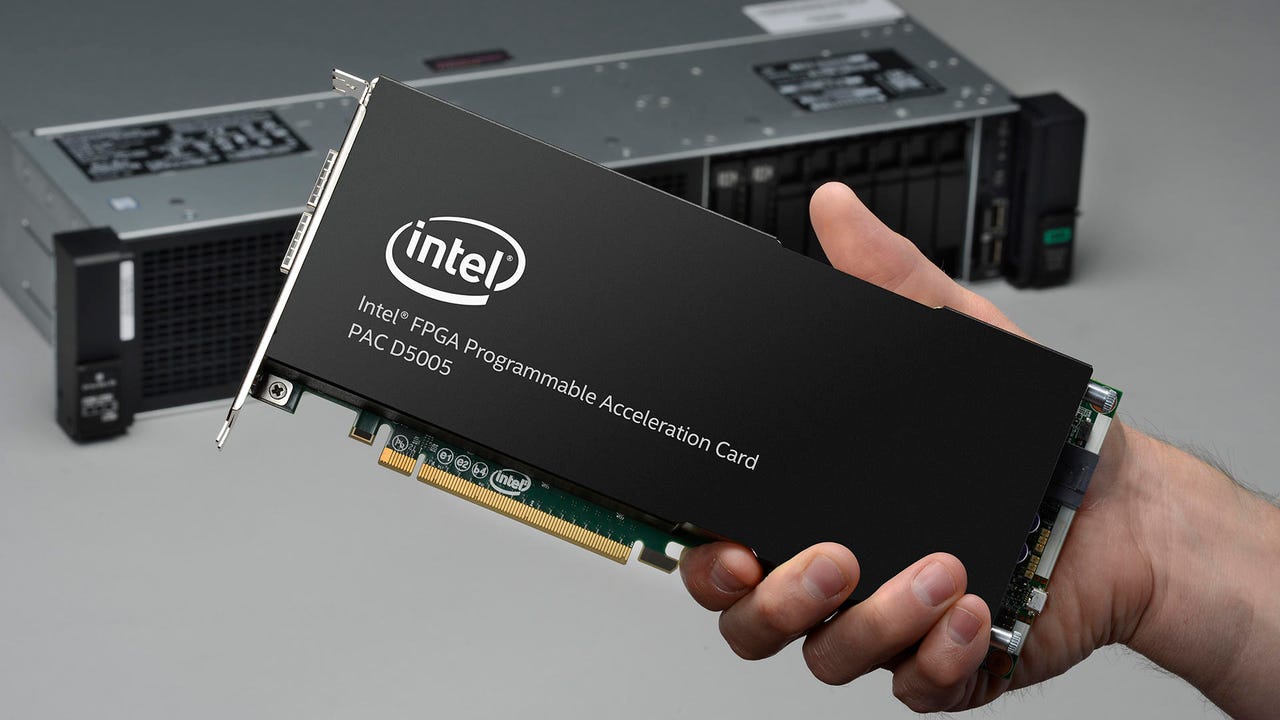Intel integrates new FPGA into HPE servers for computing-intensive markets


Intel on Monday announced a new FPGA programmable accelerator card (PAC), designed for accelerating compute-intensive workloads like AI inferencing, big data and streaming analytics, network security and image transcoding. It's bringing the new card, the PAC D5005, to market with Hewlett Packard Enterprise in the HPE ProLiant DL380 Gen10 server.
The main selling point is that an FPGA PAC can make servers run more efficiently -- by moving these compute-intensive workloads to an FPGA, it frees up a server's CPU cycles for higher-value workloads. That should lower the total cost of ownership, Intel says.
The new PAC D5005, offers more logic, memory and networking capability than Intel's previous PAC, the Arria 10 GX FPGA card. Specifically, it offers three times the amount of programmable logic, as much as 32 GB of DDR4 memory (a 4x increase) and faster Ethernet ports (two 100GE ports versus one 40GE port).
A handful of workloads have already been specifically developed for the D5005 accelerator card, including AI (speech-to-text translation) from Myrtle, network security from Algo-Logic, image transcoding from CTAccel and video transcoding from IBEX.
FPGAs have an advantage over other architectures in some cases, especially with performance is key, Intel's Patrick Dorsey told reporters. For example, he explained, "if you take data analytics and media processing workloads, accelerating with an FPGA enables higher performance per watt. The FPGAs are customized for parallel processing that allows that data to be processed together in real time in multiple streams simultaneously."
While the PAC D5005 is focused on providing a higher level of acceleration, the Arria 10 GX FPGA card is physically smaller and uses less power -- making it suitable for a broader range of servers.
While the new PAC is currently available with HPE, Intel is working with other server vendors to bring it to market.